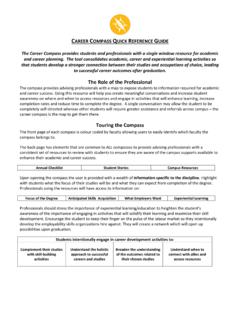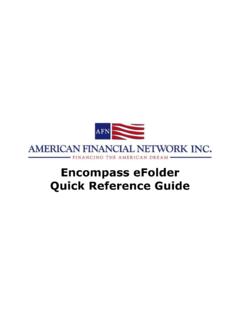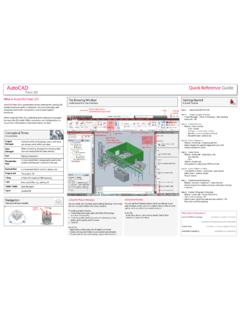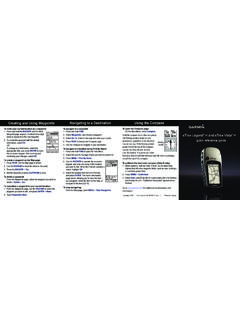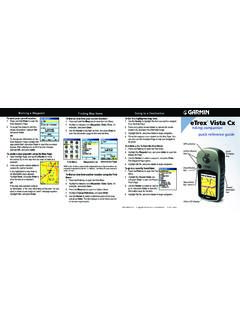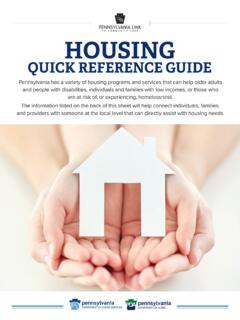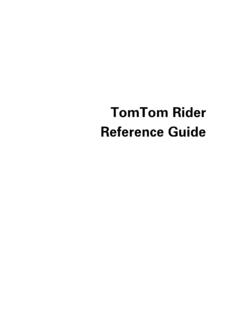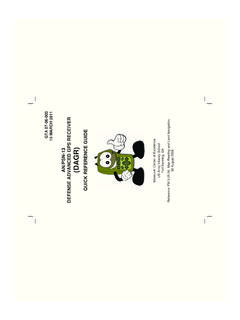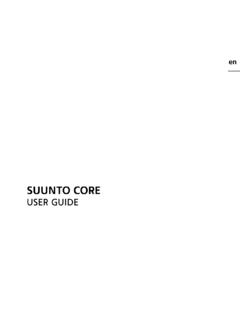Transcription of mcompass Interpretation Quick Reference Guide - Medspira
1 mcompass Interpretation Quick Reference Guide This document is designed to give you a starting point for reviewing of the mcompass anorectal manometry results. By no means are these the only questions to consider while reviewing the reports. Each case is different and your determinations must be based on individual patient experiences. Below is an explanation of all 6 tests along with: - Explanation of the report summary section - What the patient is asked to do - Some questions to ask yourself while reviewing the report - Sample bar and line graphs - A sample of the numerical data The Report Summary section of the mcompass final report selects the best . test from each of the six anorectal manometry tests. Below are the criteria of how the best test is selected. Resting- Greatest anal mean pressure Squeeze- Greatest anal mean pressure Expel Empty- Greatest anorectal gradient Expel Full- Greatest anorectal gradient Sensation- Last test performed Exhale- Greatest anal mean pressure Page 1 of 7.
2 SALE5050 rev 001. Resting- Internal anal sphincter What the patient is asked to do during this test: - The patient is lying on their left lateral with knees bent at 90 degree angle. The patient is asked to relax for 20 seconds. Some questions to ask yourself while reviewing the report: - What is the anal mean pressure reading? Is it low? - Are the readings consistent in all four quadrants of the anal canal (Posterior, Left, Anterior, and Right)? Page 2 of 7. SALE5050 rev 001. Squeeze- External anal sphincter What the patient is asked to do during the test: - The patient is lying on their left lateral with knees bent at 90 degree angle. The patient is asked to squeeze their sphincter muscles and hold for 20 seconds. This squeeze and hold should be repeated at least three times. Some questions to ask yourself while reviewing the report: - What is the anal mean pressure reading? Is it low?
3 - Are the readings consistent in all four quadrants of the anal canal (Posterior, Left, Anterior, and Right)? - Do you see consistent anal pressure increases across the three different squeeze and holds? - How long is the patient able to maintain their pressure increase? = Here is an example of a consistent anal pressure squeeze and hold. You can see the anal pressures go up at the squeeze and the pressure maintained. (Most patients will not hold for the full 20 seconds). Page 3 of 7. SALE5050 rev 001. Expel Empty/Full- rectal/anal pressures and coordination during attempted defecation What the patient is asked to do during this test: - The patient is lying on their left lateral with knees bent at a 90 degree angle. The patient is asked to bear down as if trying to have a bowel movement for 20 seconds. Some questions to ask yourself while reviewing the report: - Do you see an increase in the rectal pressure?
4 - Do you see a decrease in the anal pressure? - Is there coordination between these pressure changes? = In these graphs the rectal pressure (RB dark blue) is increasing as the anal pressures (P, L, A, R. blue, orange, green, yellow) decrease. Page 4 of 7. SALE5050 rev 001. Sensation- Assess sensory threshold in response to rectal balloon distention What the patient is asked to do during the test: - The patient is lying on their left lateral with knees bent at a 90 degree angle. As the test operator inflates the rectal balloon, the patient is asked to notify the test operator when they experience four different sensations. Sensation- first feel balloon, Desire- need to use the restroom, Urgency- urgent need to use the restroom, Pain- the patient is experiencing discomfort. Some questions to ask yourself while reviewing the report: - When does the patient first feel the balloon? - Are there regular volume intervals between each sensation?
5 - Is there a Quick (small volume increments) progression through the four sensations? (Hyper sensitivity). - Is there a slow (large volume increments) progression through the four sensations? Is the first sensation at a higher volume than expected? (Hypo sensitivity). - Are you able to see anal balloon pressure increase at each sensation threshold? - Is the patient able to go through all four sensations before the max balloon volume is reached? (180cc). - Do you see rectoanal inhibitory reflex (RAIR) present? Y Axis = pressure X axis = Time = Here you can see the RAIR as the anal pressure relaxes as more volume is added to the rectal balloon. Page 5 of 7. SALE5050 rev 001. The highlighted portion of the sensation numerical data (located towards the back of your report) gives you the specific volumes of each sensation recorded during the test (sensation, desire, urgency and pain). From this information you can determine when the patient first senses the balloon as well as the volume intervals between sensations.
6 Exhale- Determining the integrity of the local reflex arc, which helps patients maintain continence during sudden intra-abdominal pressure increases. What the patient is asked to do during the test: - The patient is lying on their left lateral with knees bent at a 90 degree angle. The patient is asked to simulate coughing for 20 seconds. Some questions to ask yourself while reviewing the report: - Are you seeing an increase in the anal balloon pressures during the rectal balloon pressure spikes? - Are these pressures coordinated? = Each of these spikes shows an increase in the anal balloon pressures (P,L,A,R) during the simulated patients coughs. (RB). Page 6 of 7. SALE5050 rev 001. Example of Impression Report for Submission Page 7 of 7. SALE5050 rev 001.
